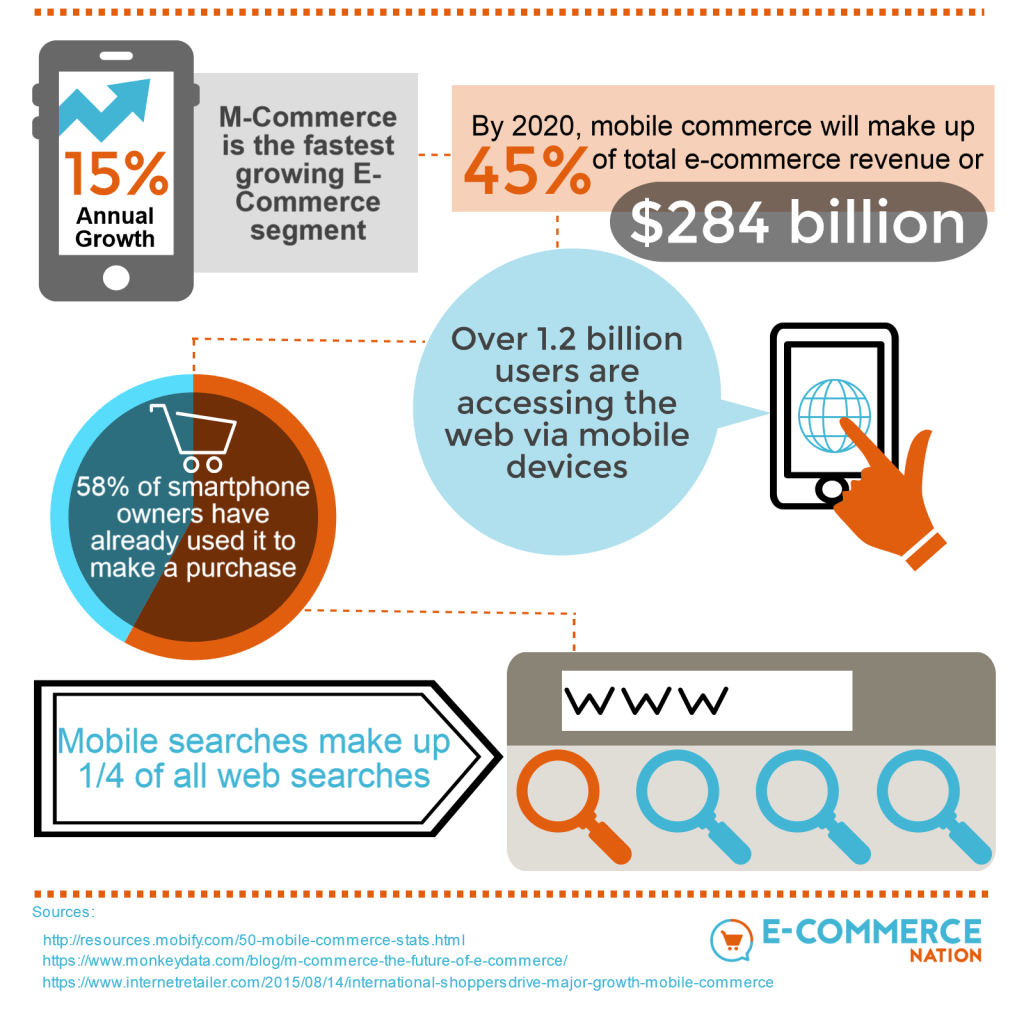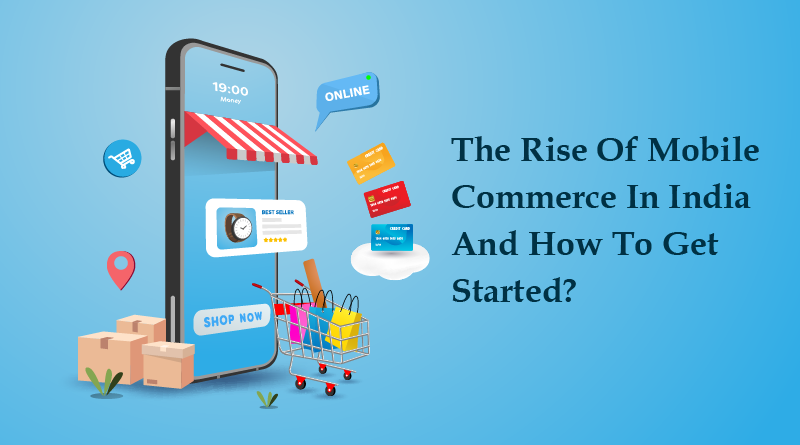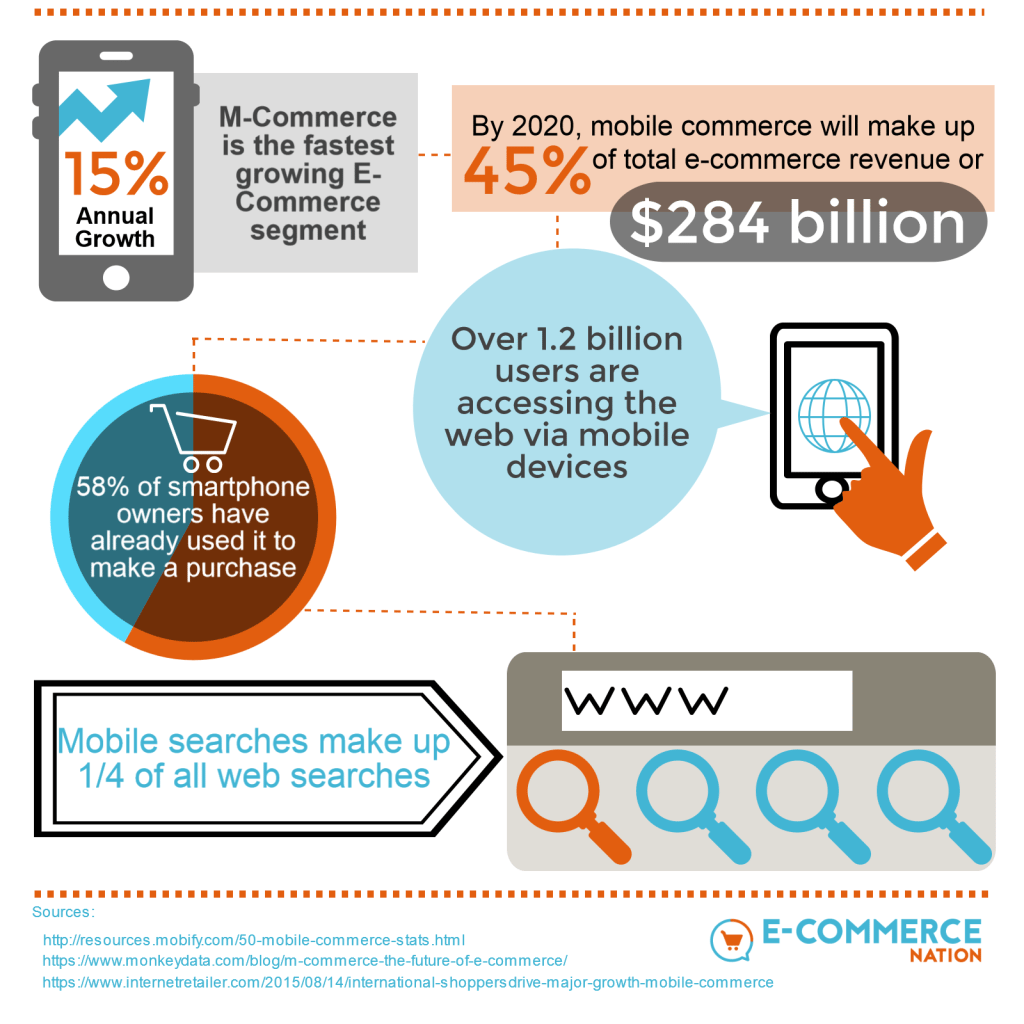The Rise of Mobile Commerce (M-Commerce): Transforming the Future of Shopping
In recent years, mobile commerce (m-commerce) has become a dominant force in the world of retail, revolutionizing how consumers shop. With the rise of smartphones and mobile apps, businesses are tapping into an ever-growing pool of mobile-first consumers who demand convenience, speed, and a seamless shopping experience. As a result, m-commerce is no longer a passing trend but a critical aspect of e-commerce strategies.

This article will explore the rise of mobile commerce, its impact on businesses, the key trends driving it, and actionable strategies for retailers looking to capitalize on this booming sector.
What is Mobile Commerce (M-Commerce)?
Mobile commerce refers to the buying and selling of goods and services through mobile devices, including smartphones and tablets. Unlike traditional e-commerce, which relies on desktops or laptops, m-commerce enables consumers to shop anywhere, anytime, directly from their mobile devices.
According to Statista, global mobile commerce sales reached over $3.56 trillion in 2022 and are expected to grow exponentially in the coming years. This rapid growth can be attributed to several factors, including the widespread adoption of smartphones, the convenience of mobile apps, and the rise of mobile payment options.
Why M-Commerce is Surging in Popularity
Several key factors are driving the rise of m-commerce. These include the increased reliance on smartphones, the development of mobile-optimized shopping experiences, and the convenience of mobile payments.
1. Smartphone Penetration: A Global Phenomenon
The growth of smartphone adoption worldwide is one of the primary drivers of m-commerce. As more consumers across the globe own smartphones, mobile shopping has become a natural extension of consumers’ online purchasing habits. With mobile devices now accounting for over 50% of global internet traffic, businesses must prioritize mobile-friendly experiences to capture the attention of these consumers.
In fact, a report by GSMA reveals that the number of smartphone connections worldwide will exceed 8.8 billion by 2025, further highlighting the growth potential of m-commerce.
2. Convenience and Accessibility
The ability to shop anytime, anywhere, is perhaps the most compelling reason for the rise of m-commerce. Consumers are no longer restricted to shopping on desktops or laptops—they can make purchases while commuting, on lunch breaks, or even from the comfort of their homes. This convenience is driving the increasing preference for mobile shopping over traditional retail methods.
Furthermore, mobile apps provide a streamlined and user-friendly experience, allowing customers to browse, compare prices, and make purchases in a matter of minutes. This accessibility is particularly important in the age of instant gratification, where consumers expect quick and easy shopping experiences.
3. Mobile Payment Solutions
Mobile payment solutions have transformed how consumers make payments online. Digital wallets like Apple Pay, Google Pay, and Samsung Pay offer quick and secure payment options, making the checkout process faster and more convenient. QR code payments have also become popular in many countries, enabling consumers to make payments with a simple scan.
These advancements in mobile payments have made it easier than ever for consumers to complete purchases, contributing to the growth of m-commerce.

Key Trends Driving the Growth of M-Commerce
Several trends are shaping the landscape of mobile commerce, providing retailers with new opportunities to connect with consumers and drive sales.
1. The Growth of Mobile Apps
While many consumers still shop through mobile browsers, mobile apps have become the preferred method of shopping for many. According to App Annie, mobile shopping apps now account for about 70% of all e-commerce sales on mobile devices. The reason for this preference is simple: apps offer faster load times, personalized experiences, and a more intuitive interface.
- Push notifications: Retailers can engage customers with personalized offers, discounts, and reminders about abandoned carts through push notifications.
- Personalized recommendations: Mobile apps allow retailers to track users’ preferences and provide tailored product suggestions, improving conversion rates.
2. Voice Commerce: Shopping with a Simple Command
With the increasing popularity of voice assistants like Amazon Alexa, Google Assistant, and Apple Siri, voice commerce is set to become a significant player in m-commerce. Consumers can place orders using voice commands like “Alexa, order my favorite coffee,” making the shopping process even more seamless and hands-free.
Retailers must optimize their platforms for voice search to capture this emerging trend, ensuring that products are discoverable through voice queries. This includes using natural language keywords and creating voice-friendly shopping experiences.
3. Mobile-First Websites and Mobile Optimization
For retailers looking to succeed in m-commerce, having a mobile-optimized website is crucial. Websites that are not mobile-friendly risk losing out on a large portion of potential customers. Mobile optimization involves ensuring that websites are responsive, meaning they adjust their layout and functionality based on the device being used.
- Fast loading times: Speed is essential. Slow-loading websites can lead to high bounce rates, especially on mobile devices where users expect quick access.
- Simplified checkout process: Streamlining the checkout process on mobile devices is critical to reducing cart abandonment rates. Offering one-click purchasing and multiple payment options can enhance the mobile shopping experience.
4. Social Commerce: The Intersection of Social Media and Mobile Shopping
Social commerce has gained traction in recent years, with platforms like Instagram, Facebook, and TikTok integrating shopping features directly into their apps. Social commerce allows businesses to sell products directly on social media, providing consumers with an easy and frictionless way to shop while browsing their feeds.
- Shoppable posts: Platforms like Instagram now allow brands to tag products in their posts, making it easy for users to click and purchase directly from the app.
- Influencer marketing: Collaborating with influencers can help increase visibility and drive sales through social commerce channels.
5. Augmented Reality (AR) and Virtual Try-Ons
Augmented reality (AR) is revolutionizing the way consumers interact with products online, particularly in industries like fashion, beauty, and home decor. AR technology allows users to virtually “try on” products before making a purchase.
For example, a shopper can use AR to see how a piece of furniture would look in their living room or virtually try on a pair of sunglasses using their mobile phone. This immersive shopping experience helps reduce uncertainty and increases confidence in purchasing decisions.
Retailers can integrate AR features into their mobile apps or websites, offering customers a unique and engaging way to explore products.

How to Leverage M-Commerce for Your Business
With m-commerce growing at an unprecedented rate, retailers must take proactive steps to ensure they capitalize on this trend. Here are some strategies to help you succeed in mobile commerce:
1. Optimize for Mobile-First Shopping
- Mobile-responsive design: Ensure that your website is optimized for mobile devices, with easy navigation, fast loading times, and a user-friendly interface.
- Simplify checkout: Streamline the checkout process to make it as easy as possible for customers to make purchases on their phones.
- Mobile payment options: Offer various payment methods, including digital wallets and mobile payment solutions like Apple Pay and Google Pay.
2. Invest in Mobile Apps
Consider developing a mobile shopping app that enhances the shopping experience for your customers. Mobile apps provide numerous advantages, such as faster load times, personalized recommendations, and easy access to exclusive offers and discounts.
3. Leverage Social Media and Influencers
Use social media platforms to engage with potential customers and drive traffic to your mobile store. Leverage the power of influencers to expand your reach and create authentic connections with your audience.
4. Incorporate AR Technology
Invest in augmented reality (AR) technology to offer an immersive and interactive shopping experience. By allowing customers to virtually try on products or see them in their own space, you can increase conversions and reduce return rates.
5. Focus on Customer Experience
The success of m-commerce depends largely on providing a seamless and enjoyable customer experience. Offer excellent customer service, fast shipping, and personalized offers to keep customers coming back.
The Future of M-Commerce
The future of mobile commerce is bright, with innovations like 5G technology, AI, and machine learning set to further transform the way we shop on mobile devices. As mobile-first shopping continues to gain momentum, businesses that adapt to this new shopping paradigm will be well-positioned for success.
FAQs
1. What is mobile commerce (m-commerce)?
Mobile commerce (m-commerce) refers to the buying and selling of goods and services through mobile devices like smartphones and tablets. It allows consumers to shop anywhere, anytime, using mobile apps or mobile-optimized websites.
2. How can retailers benefit from mobile commerce?
Retailers can benefit from m-commerce by reaching a wider audience, improving customer convenience, and increasing sales. Mobile commerce also enables retailers to engage customers with personalized experiences, push notifications, and mobile payment options.
3. Why is mobile optimization important for e-commerce businesses?
Mobile optimization ensures that your website is user-friendly and responsive on mobile devices. With an
increasing number of consumers shopping on mobile, a mobile-optimized site helps prevent high bounce rates and improves customer experience.
Conclusion
The rise of mobile commerce (m-commerce) is reshaping the retail landscape, offering businesses new opportunities to connect with customers and increase sales. By embracing mobile-first strategies, leveraging mobile apps, integrating mobile payment solutions, and adopting innovative trends like AR and social commerce, retailers can stay ahead of the curve and succeed in the competitive world of m-commerce.


